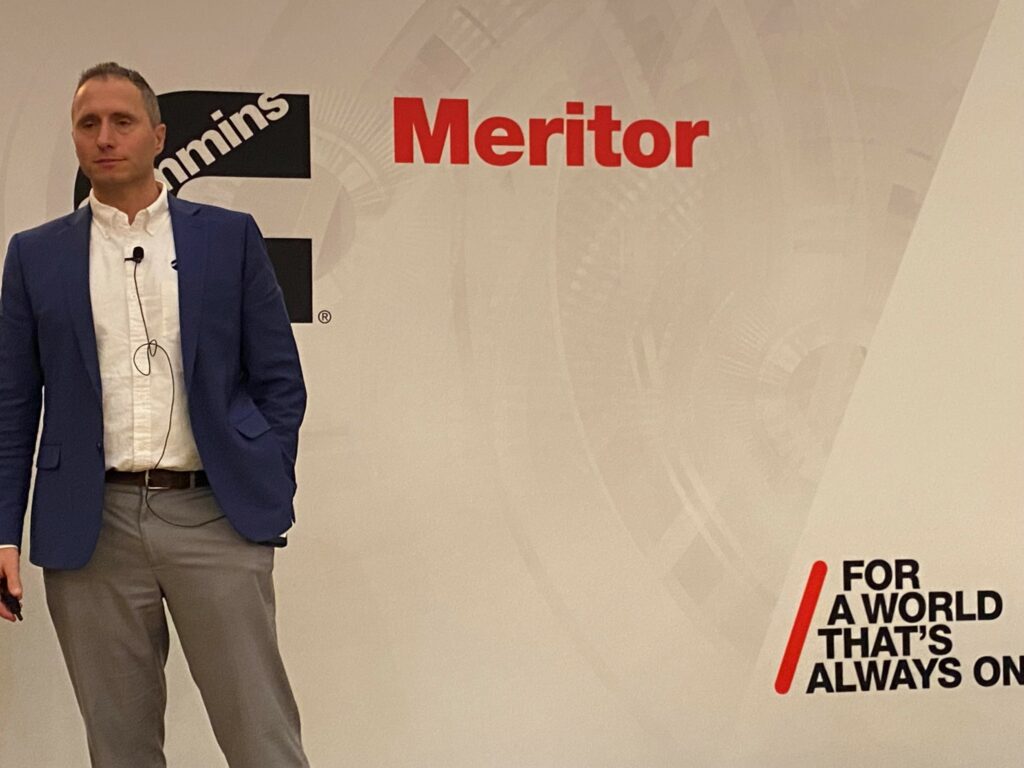Cummins-Meritor advances integration, sets sights on growth
Digesting and integrating a $3.7-billion acquisition is a major undertaking at the best of times.
Let alone against the backdrop of unprecedented parts shortages, supplier price increases, and supply chain disruptions. Cummins-Meritor met with trade press editors during Heavy-Duty Aftermarket Week for the second time since the announced merger, to provide an update on the process, claiming it has gone smoothly and customers have remained well served.

“That was part of the exacerbation of the anxieties,” Alan Rabadi, general manager, global aftermarket and business development with Cummins-Meritor said, responding to a question on the industry conditions of the past year. “At a normal time, doing an integration would be a massive undertaking. What we tried to do was have separate teams doing the integration work from doing the day-to-day work, trying not to overwhelm people with the number of assignments and pace of change.”
He said the integration was intentionally done in a “slow and methodical” manner. “We didn’t want to rush it, or break anything in a time of uncertainty and a lot of change,” Rabadi said. The company is viewing its full integration as a three-year journey, with one now in the books.
It has been mindful about staffing its executive with legacy leaders from both companies.
Customer engagement
“We feel really good about the engagement [from customers],” said Rabadi. “The feedback we’ve gotten is that we’ve continued to serve them as well or better than we have in the past.”
Much of the process has been invisible to end users, focused on integrating IT and HR systems.
Doug Dole, general manager, global product strategy, said the aftermarket business Meritor brings to the table is already benefiting from Cummins resources. These include new remanufacturing processes, 3D printing, and other prototyping and reverse-engineering capabilities.
Brittany Soika said the company has set its sights on becoming the North American market leaders in air disc brakes, which represents a US$345-million market. (The drum brake market, which Meritor says it currently leads, is worth US$905 million annually by comparison).
“We are making a lot of investments to grow our drum brake business while also growing our air disc brake business as well,” she said, noting the adoption of disc brakes is slowing in the trailer segment, mostly because of concerns around performance when trailers are parked for extended periods. However, disc brakes continue to see increased adoption on trucks.
Ramping up brake production
The company is growing its Plainfield, Ind., brake plant, where by this year it will have capacity to produce 8 million shoes a year thanks to a $7-million investment focused on automation. By 2030, the goal is to also be able to remanufacture 100,000 air disc brake calipers a year at the plant.
She also highlighted improvements to the Euclid aftermarket parts brand, which has seen the creation of high-end retail showrooms within customer stores.
“In 2023, the team has done a lot of work and launched over 500 new parts numbers across existing and new product categories,” she said of the Euclid line.
E-commerce improvements
Work is also being done to better serve those who’d rather not visit a store to procure parts. Pete Snow, a senior manager with Cummins-Meritor, said work continues to improve e-commerce capabilities. Since 2022, site improvements have been made, the back-end query system was revamped, the home page redesigned, and cross-reference capabilities and 360-degree images enhanced.
The company also launched a new driveshaft-on-demand configurator tool, made parts search tools easier to find, and added a price and availability widget. It now plans to roll these capabilities out globally.
Meanwhile, Cummins also is focused on its engine business, both diesel and new power. Rabadi said Cummins is “doubling down on our investment in diesel technology,” and is in the midst of rolling out three “new clean sheet diesel engine programs,” something the company hasn’t done before in its 100-year history.
Cummins isn’t limiting its options though, and is also bringing to market heavy-duty engines that will run on hydrogen, batteries, natural gas, renewables and other clean fuels, via a fuel-agnostic platform.
“Cummins is committed to diesel technology, we continue to invest and grow, and we are also looking at new technologies so we will have the right solution for the right application when the time comes,” Rabadi said.
Have your say
This is a moderated forum. Comments will no longer be published unless they are accompanied by a first and last name and a verifiable email address. (Today's Trucking will not publish or share the email address.) Profane language and content deemed to be libelous, racist, or threatening in nature will not be published under any circumstances.